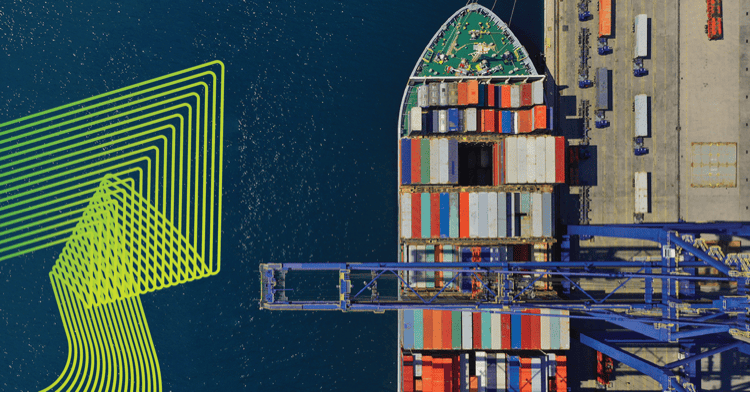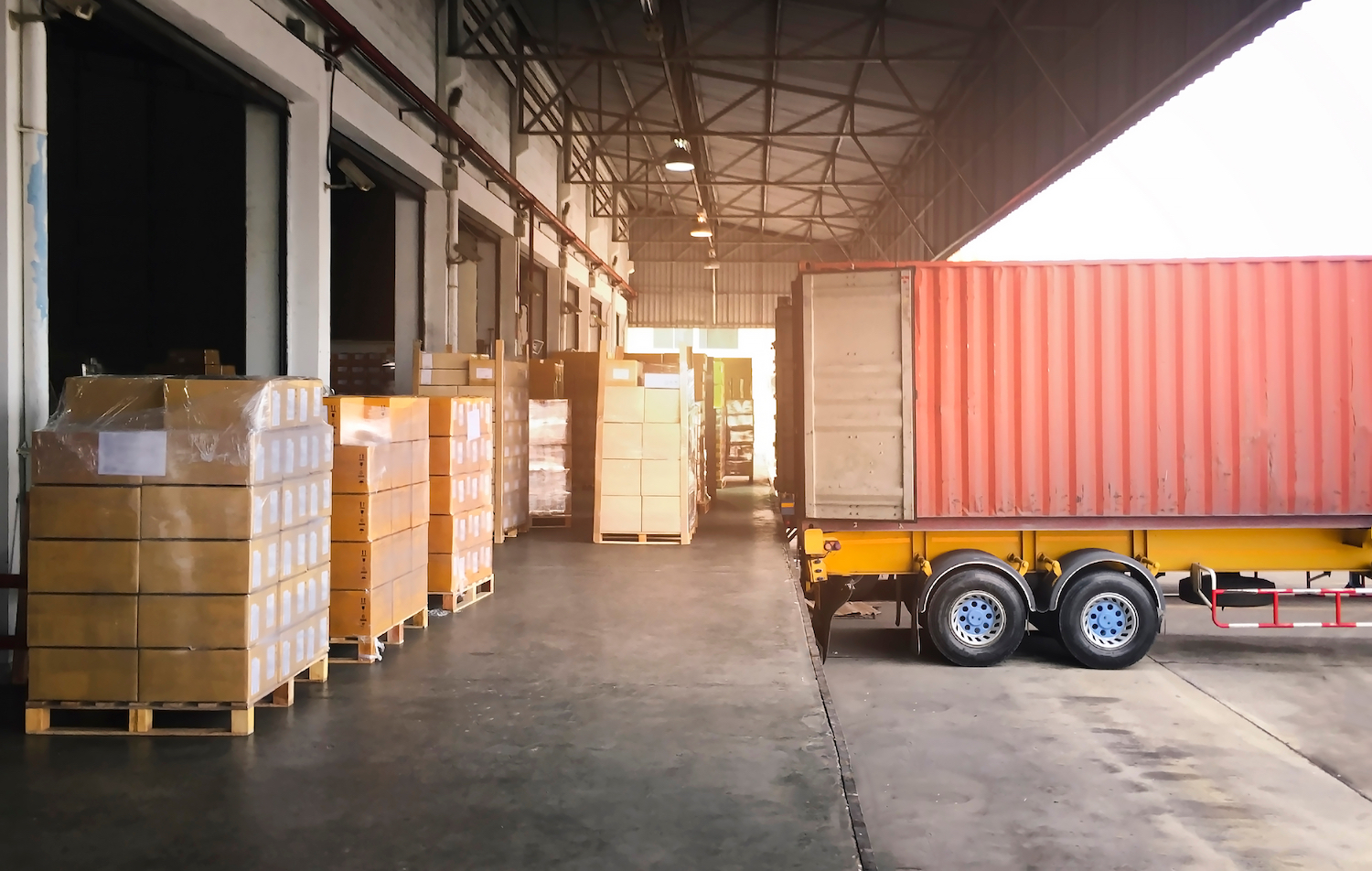Operational disruptions can significantly impact an organization, with supply chain complications being among the most common and costly—averaging 6–10% of revenue losses, according to a 2021 Economist Intelligence Unit study. Beyond financial damage, these disruptions can also harm a company’s reputation. To maintain continuity and protect both revenue and brand integrity, organizations must proactively identify potential risks and develop mitigation strategies. While easier said than done, effective planning starts with a clear understanding of the risks that could threaten supply chain stability.
Types of Supply Chain Risks: External and Internal Risks
Supply chain risks can be categorized into two main types: external and internal risks. Understanding these distinctions is essential for implementing an effective risk management strategy.
External Supply Chain Risks are ones that originate outside an organization. This makes it difficult for security teams to predict and mitigate. Examples of external supply chain risks include:
- Global disruptions, such as economic instability, geopolitical tensions, and environmental challenges.
- Natural disasters
- Pandemics and health crises
- Commodity shortages and price volatility
All of these external risks can cause severe disruptions to labor forces and supply availability, which then directly impact an organization’s operations.
Internal risks are ones that stem from within the organization. In most cases, internal risks can often be identified and managed proactively. The most common internal risks to be aware of include:
- Operational vulnerabilities, including inefficiencies or weaknesses in internal processes.
- Supplier relationship challenges that stem from poor communication, often leading to misaligned priorities.
- Inadequate risk management practices. This risk arises when there is a lack of contingency planning and risk assessments.
- The final internal supply chain risk to be aware of are cybersecurity threats like data breaches and cyberattacks, which can have detrimental impacts on supply chain integrity.
Outsourcing supply chain management may reduce some burdens, but it does not eliminate risk. External suppliers can still face leadership changes, staffing issues, or internal challenges that disrupt operations. Even highly capable partners are vulnerable to external forces like natural disasters, which can cause widespread delays. While it’s impossible to eliminate all supply chain risks, organizations can mitigate their impact by proactively planning for common disruptions and establishing contingency strategies for more severe scenarios. Such preparation enables leaders to respond effectively under pressure and maintain operational continuity.
Mitigating and Managing Supply Chain Risks
There are a few common ways to go about supply chain risk management. Organizations can choose to diversify their supplies. If an organization has established relationships with multiple suppliers, they are more likely to more likely to maintain business continuity if one supplier has an unforeseen challenge. Organizations should also be leveraging insurance to guarantee protection against supply chain risks.
A more modern tactic in supply chain risk management is leveraging augmented analytics. Augmented analytics is transforming supply chain risk management by providing real-time insights and forecasting capabilities. This intelligence can help organizations avoid costly supply chain disruptions and keep operations running smoothly thanks to timely, relevant alerts and in-depth reports that give leaders a complete picture of potential threats.
Many organizations lack the resources to continuously monitor global developments, and relying solely on automated alert systems can overwhelm security teams with broad, often irrelevant notifications. This information overload contributes to alert fatigue, making it difficult to identify and prioritize the events that truly pose a risk to the organization.
With the globalization of supply chains, organizations must be forecasting global risk and stability. Partnering with a provider that can monitor global developments and contextualize potential disruptions is essential. Seerist offers a unique combination of advanced technology and a global team of expert analysts who verify events, deliver on-the-ground insights, and provide meaningful context to help leaders understand the scope and impact of emerging threats. This blend of human expertise and machine-driven analysis delivers powerful, actionable intelligence.
A few of the benefits of Seerist’s platform include:
- Cutting-edge technology: Seerist leverages the most innovative technologies, including Artificial Intelligence, Machine Learning, and Natural Language Processing. These powerful tools work together to identify emerging threats by parsing millions of data points.
- Human intelligence integration: Technology has changed the risk management landscape, but expert analysts offer rich insight and provide compelling on-the-ground perspectives that can enhance the data served up by the machines. This contextual understanding and nuanced insight help security teams to create the best strategies and mitigation plans.
- Predictive modeling: The most successful organizations will be the ones to not only solve problems but circumvent issues all together. This is why tools that offer the ability to forecast potential disruptions, and the business implications are so important.
- A holistic perspective: Review events from a holistic perspective to understand the context behind them. While security teams undoubtedly need to be alerted to events in real-time, what they benefit most from is a holistic view of stability.
Implementing Risk Mitigation Strategies
Since many things can go awry in the supply chain, often factors out of anyone’s control, the best way to minimize disruptions is to proactively focus on multiple strategies at once. Key strategies that security and leadership teams will want to focus on include:
- Supplier and sourcing diversification: Reducing reliance on single suppliers or regions. When organizations have only one supplier they are at risk if, and when, that supplier encounters a challenge or crisis. While it is valuable to establish a strong relationship with suppliers, it is important to maintain open discussions with multiple key players to ensure survival of operations in times of crisis.
- Strategic stockpiling: Maintaining inventory buffers to absorb disruptions. Budgeting to build a supply of additional critical materials is a smart way to ensure seamless operations when a supply falls under duress. This may not always be possible or feel like the best use of resources at the time, but if these materials are needed, it can be a massive asset to have.
- Scenario planning: Developing contingency plans for potential disruptions. This strategy falls in line with the one above. Having access to intelligence is one thing; but then leaders need to leverage it. Taking the time to plan based on available information is a worthy way to spend time.
- Stronger supplier relationships: Ensuring alignment and open communication. While it is recommended to diversify supply chain suppliers, it is equally important to build strong, reliable, and trusted relationships based on regular communication. When organizations and suppliers feel like partners, they are more apt to work together to ensure the success of one another.
Future-Proofing Your Entire Supply Chain
Supply chain risks will continue to evolve, necessitating continuous adaptation. Leaders need to adopt a future-proofing mindset by investing in technology. Leaders whose security teams utilize AI-driven insights for proactive internal and external risk management will be able to adapt to changes in the marketplace with minimal downtime.
It is also paramount that security teams are focused on data-driven decision-making. Security teams should be viewed as essential players in an organization’s security posture and planning. They have access to massive amounts of data. When these analytics are leveraged properly, responsiveness can be enhanced significantly.
Lastly, security teams and leaders can best stay ahead of changing risks in the supply chain when they make it a priority to monitor and adapt. Organizations that create a plan and stick with it for the long-term may miss out, while, ones that continuously check industry risks to verify emerging threats will have a competitive advantage to stay in front of significant incidents.
Ensuring Supply Chain Resilience
There are countless risks and threats for a security team to monitor and vet on a daily basis. The supply chain security is a critical part of this work. Integrating risk management into your company’s supply chain operations is essential for long-term resilience. Teams need to focus on both internal and external factors, leverage advanced analytics for proactive risk assessments, implement strategic mitigation measures, and invest in future-proofing supply chains through continuous adaptation.
Most internal teams struggle to do this alone. Partnering with the right vendor, such as Seerist, is instrumental in finding success. Seerist is unique in its ability to offer expert insights from experienced local analysts, in addition to historical data, and monitoring capabilities. This trio of information sources help security teams and leaders anticipate issues and maintain operational resilience, so business can continue as usual despite supply chain issues and challenges.
By automating the collection of global data, capturing various shifts and swings, and filtering out the noise, Seerist provides valuable insights. These insights are seamlessly integrated into a user-friendly dashboard, ensuring swift and dependable decision-making in crucial moments.
Book a demo to see Seerist’s threat intelligence tools in action.
Frequently Asked Questions About Supply Chain Risk Management
What are common supply chain risk factors?
Supply chain risk factors include natural disasters, cyberattacks, supplier failures, and geopolitical instability. These can lead to operational disruptions, financial losses, and damage to brand reputation. Early risk identification is essential to minimize their impact and protect business continuity.
How do global supply chain risks affect business continuity?
Global supply chain risks such as pandemics, international conflicts, and economic shifts can disrupt supply availability, cause delays, and increase costs. These risks often require agile responses to ensure that business operations can continue smoothly despite global instability.
Why are manufacturing supply chains particularly vulnerable?
Manufacturing supply chains depend on timely delivery of raw materials and components. Any delay or shortage caused by transportation issues, supplier disruptions, or global events can halt production and result in significant revenue losses. Supply chain challenges are especially acute in this sector due to its complex dependencies.
What is supply chain risk management?
Supply chain risk management involves identifying, assessing, and mitigating risks that could disrupt supply chain efficiency. This includes activities such as supplier audits, scenario planning, and regular supply chain risk assessment to evaluate emerging threats and vulnerabilities. A structured risk management process helps organizations stay prepared and resilient.
What causes supply chain disruptions?
Supply chain disruptions can be caused by a range of events including natural disasters, pandemics, cyberattacks, labor shortages, and political instability. Even a small disruption in one part of the chain can affect multiple partners and slow down business operations. Enhanced supply chain visibility can help organizations detect issues early and respond quickly.
What are supply chain attacks, and how can they be prevented?
Supply chain attacks typically involve cyber threats that target suppliers or service providers. These can lead to data breaches and compromised systems. Supply chain managers play a critical role in evaluating supplier security practices and implementing protective measures to reduce supplier risks.
What are some effective supply chain risk mitigation strategies?
Risk mitigation strategies include supplier diversification, strategic stockpiling, scenario planning, and the use of advanced analytics. Embracing sustainable supply chain practices can also help reduce environmental risks while improving operational resilience. Leveraging tools like Seerist helps organizations proactively identify threats and respond with agility and accuracy.






